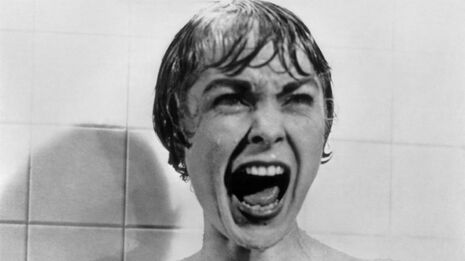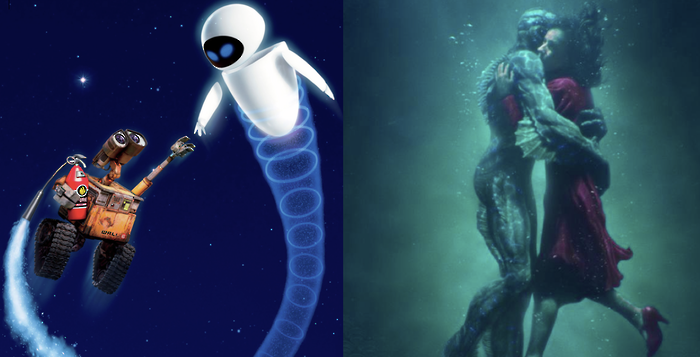The sound of silent screaming
Taking us on a whirlwind ride through the scariest soundtracks ever written, Lillian Crawford attempts to demystify the subtle art of horror film music

You are lost, alone, and darkness has fallen. There is a faint humming in the distance, a violin caught in eerie suspension, crescendoing as stillness engulfs your mind. Silence heightens the senses, you hardly dare breathe for fear of making a sound. You may have never found yourself here in real life, but everyone has in their nightmares – and in that moment, we almost long for that orchestral stab to jolt us to our bloody climax. When things get a little scary, we cannot help but revisit the pangs inflicted by horror movie music.
One typically thinks of Disney as the creator of pleasant fantasy, its warm, lilting melodies lingering in the popular imagination of childhood. We too often forget the torment inflicted by the screeching string trills and French horn glissandi when Ichabod first faces the Headless Horseman, and the earth-shattering brass of Mussorgsky scoring Chernabog’s wrath in Fantasia. Some of my earliest cinematic memories are of averting my eyes while Snow White races through the Haunted Forest, closely pursued by the racing ferocity of a swirling symphony of horror.
The metallic melody is haunted by satanic whispers, descending into aggressive electric guitars and rising arpeggios from a Moog System 55 synthesiser
It is a memory evidently etched in the subconscious of Dario Argento as well, whose 1977 film Suspiria explodes with Technicolor vibrancy. Yet the score is a far cry from Snow White’s relative conservatism, with Italian progressive rock group Goblin distorting a twinkly lullaby into a multi-textured monstrosity. The metallic melody is haunted by satanic whispers, descending into aggressive electric guitars and rising arpeggios from a Moog System 55 synthesiser. Enrapturing the audience through the grotesque yet jarringly beautiful atmosphere created, the soundtrack has earned its place as a genre staple, setting a lofty precedent for Thom Yorke’s score to the upcoming Luca Guadagnino reboot.
Goblin’s synthesised stirrings also made a profound impression on John Carpenter, a self-confessed amateur whose theme to Halloween still strikes dread in the hearts of listeners. Much like John Williams’s E-F-E-F motif in Jaws, the key to suspense is minimalist simplicity, here little more than octaves played in 5/4 time. Nevertheless, the film would fail without it – when Carpenter first screened it to a 20th Century Fox executive without music, she had not been scared at all. She would later scream along with everyone else, the teetering balance lost by percussive staccati that hit out of nowhere.
Of course, Carpenter was indebted also to Bernard Herrmann, favourite of the ‘master of suspense’ himself. Establishing the slasher genre, Alfred Hitchcock’s Psycho gave it its signature musical move – the ‘stinger’, a high-pitched jolt so terrifying it will have you skipping showers for weeks. A low budget, typical of the genre, worked in the film’s favour, restricting Herrmann to a cluster of muted string players. The sound is nerve-shredding, piercing into the soul and drawing out an internal primal scream that lurches us out of reality. Its non-linear chaos has been the subject of a 2010 scientific study, led by Daniel Blumstein, which compared the dissonance to the distressful cry of the yellow-bellied marmot. Music has the power to create sympathy, a biological reflex of witnessing another’s pain.
This response underlies one truly chilling scene in John Krasinski’s A Quiet Place when a new-born baby is placed in a wooden box to muffle her screams. It is a disarming reminder of the equal importance of sound’s absence, making the roll of dice or the patter of footsteps positively deafening. Indeed, Marco Beltrami’s clunky score is so layered with clichés that it ultimately causes the tension created in these vacuous moments to dissipate. In place of a musical score, high levels of anxiety can be created just as effectively by a soundscape, such as Jóhann Jóhannsson’s tumultuous bangarang in Darren Aronofsky’s mother! Here the now tired falseness of the ‘stinger’ is cast aside for a score unconventional in every sense.
Establishing the slasher genre, Alfred Hitchcock’s Psycho gave it its signature musical move – the ‘stinger’, a high-pitched jolt so terrifying it will have you skipping showers for weeks
Some of the most gripping horror soundtracks were not original at all, but instead incorporated the unsettling atonalism of twentieth-century experimental composers. Few have held a greater influence than Krzysztof Penderecki, most notably upon The Exorcist director, William Friedkin. As Father Karras first appears before the McNeill house, an excerpt from the third act of The Devils of Loudon can be heard, an explosive operatic representation of demonic possession. In direct contrast to the squawking harmonics and rambling percussion, Friedkin took the opening of Mike Oldfield’s Tubular Bells for the film’s theme, a minimalist, progressive rock sequence with greater semblance to the later synth music of Carpenter. While retaining the ominous dread of a minor key, Oldfield’s arpeggios bring a softness that leaves room for optimism, even during the bouts of projectile vomit and crippled spider-walking.
Given Stanley Kubrick’s penchant for polyphony, it is hardly surprising that modernist composers also dominate The Shining. Here he employs the most basal selections of Penderecki’s oeuvre with the same eye to the viewer as Herrmann in Psycho. As Jack enters Room 237, The Awakening of Jacob throws the auditorium into complete disarray, and his Utrenja (Ewangelia) floods discordant vocals into the desolation of the Overlook Hotel. Alongside an emphasis on Wendy’s panic as her heartbeat literally pounds through the speakers, Kubrick further allows us inside the frenetic instability of Jack’s mind via the lurking patter of Béla Bartók. Everything builds on the opening theme, an electronic play on Hector Berlioz’s Symphonie fantastique and the Dies irae, a macabre Gregorian chant hailing the apocalypse. It has one shooting rapid glances over both shoulders, consuming the listener in a state of unshakable discomfort.
Composers continue to experiment today. Utilising unfamiliar instruments can alienate an audience and bring them to the brink of tension. A recent example is the prominence of the bayan, a Tatar buttoned accordion, in the compositions of Sofia Gubaidulina which pursue Colin Farrell throughout Yorgos Lanthimos’s The Killing of a Sacred Deer. It is a revelation fully embraced by The VVitch composer, Mark Korven, who commissioned an ‘Apprehension Machine’ featuring plucked metal rulers and unearthly rotating wheels for the film. Combined with the Swedish nyckelharpa, a water phone, and even a hurdy-gurdy, the mystery of the coven reverberates through the forbidding landscape with a rare supernatural force.
Horror is typically a weak genre, resting on a repeated formula of jump scares and scratchy violins that fail to haunt a desensitised modern audience. With relentless reiterations of Insidious or The Conjuring spewed out every year, it is easy to dismiss its fruits as consistently rotten. Alas, horror is in 2018 more popular than ever, with a weekly fright fest commonplace among new releases. While the majority settle for mediocrity, the likes of Korven and Jóhannsson have demonstrated that there are methods as of yet unexplored to distress cinemagoers and have them quaking in their seats. So, turn off the lights, put on your headphones, and immerse yourself in the dissonant and the discordant. I fear you will not last five minutes.
 News / Cambridge bus strikes continue into new year16 January 2026
News / Cambridge bus strikes continue into new year16 January 2026 News / Uni members slam ‘totalitarian’ recommendation to stop vet course 15 January 2026
News / Uni members slam ‘totalitarian’ recommendation to stop vet course 15 January 2026 News / Local business in trademark battle with Uni over use of ‘Cambridge’17 January 2026
News / Local business in trademark battle with Uni over use of ‘Cambridge’17 January 2026 Science / Why smart students keep failing to quit smoking15 January 2026
Science / Why smart students keep failing to quit smoking15 January 2026 Interviews / The Cambridge Cupid: what’s the secret to a great date?14 January 2026
Interviews / The Cambridge Cupid: what’s the secret to a great date?14 January 2026










